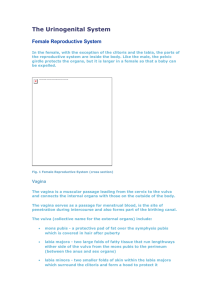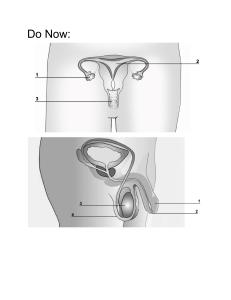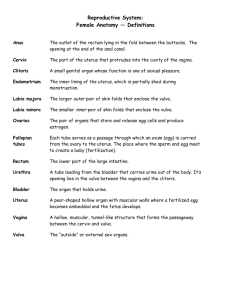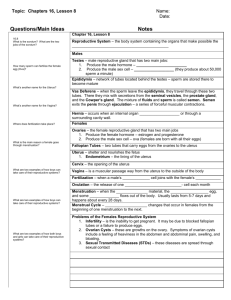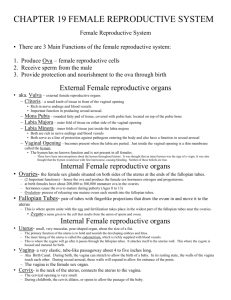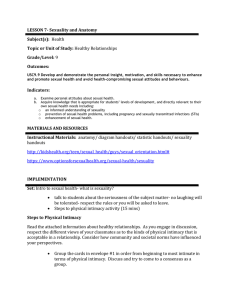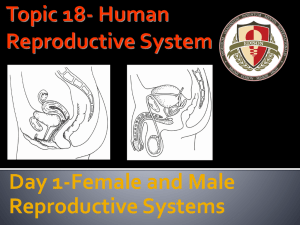Day 3 Female Anatomy - Answer Sheet
advertisement
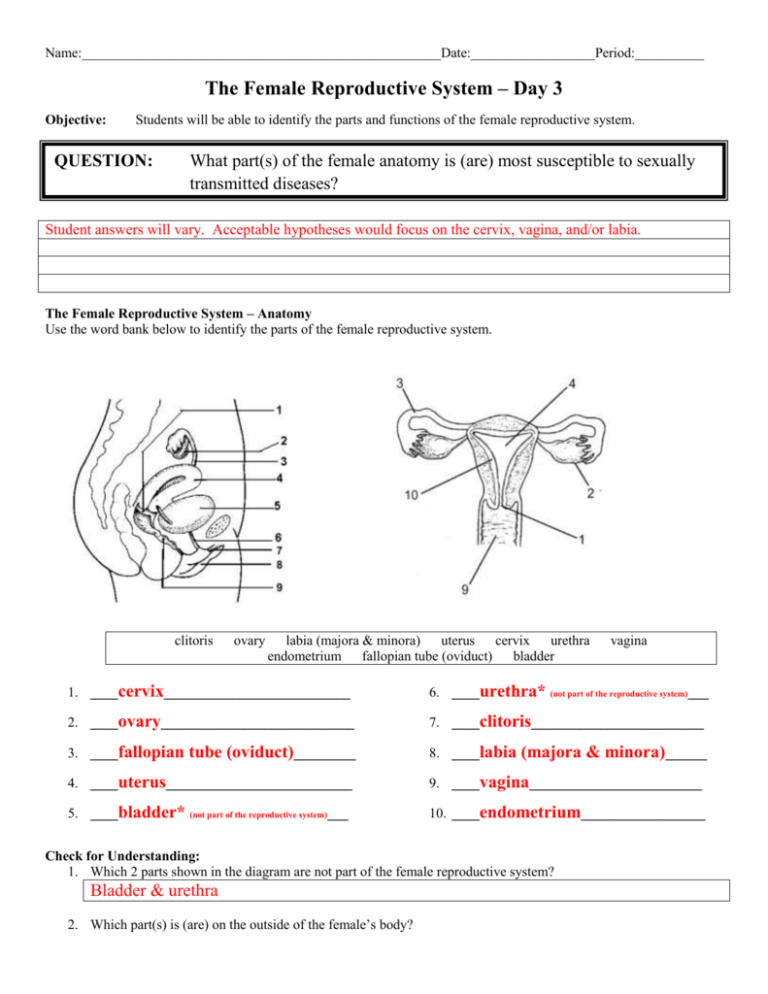
Name:____________________________________________________Date:__________________Period:__________ The Female Reproductive System – Day 3 Objective: Students will be able to identify the parts and functions of the female reproductive system. QUESTION: What part(s) of the female anatomy is (are) most susceptible to sexually transmitted diseases? Student answers will vary. Acceptable hypotheses would focus on the cervix, vagina, and/or labia. The Female Reproductive System – Anatomy Use the word bank below to identify the parts of the female reproductive system. clitoris ovary labia (majora & minora) uterus cervix urethra endometrium fallopian tube (oviduct) bladder vagina 1. ____cervix___________________________ 6. ____urethra* 2. ____ovary____________________________ 7. ____clitoris_________________________ 3. ____fallopian 8. ____labia tube (oviduct)_________ (not part of the reproductive system)___ (majora & minora)______ 4. ____uterus___________________________ 9. ____vagina_________________________ 5. ____bladder* 10. ____endometrium__________________ (not part of the reproductive system)___ Check for Understanding: 1. Which 2 parts shown in the diagram are not part of the female reproductive system? Bladder & urethra 2. Which part(s) is (are) on the outside of the female’s body? Clitoris & labia The Female Reproductive System – Function Identify which part of the female reproductive system best matches the function stated below. Anatomical Structure ovary endometrium clitoris Anatomical Function oval-shaped organ that produces the ovum (egg) and the female hormones estrogen and progesterone innermost lining of the uterus which grows to a thick, nutritive tissue that can either support implantation in instances of pregnancy or is shed monthly during menstruation small, exterior organ which causes sexual excitement and is homologous to the male penis vagina an elastic, muscular tube that leads from the uterus to the exterior of the female body which receives the penis and sperm during intercourse uterus large, muscular organ that supports the growing fetus and contracts during labor cervix lower end of the uterus which facilitates the passage of sperm into the uterus and blood from menstruation and a baby out of the uterus fallopian tube (oviduct) a very fine tube that allows the passage of the ovum from the ovary to the uterus and is the site of fertilization labia (majora & minora) Color on Diagram external folds of skin that surround and protect the clitoris and the vaginal opening Check for Understanding: 3. Trace the pathway of ovum from the site of origin out of the female body using the appropriate terms. Not all terms from above must be used. __ovary__ → _fallopian tube (oviduct)__ → __uterus__ → __cervix__ → __vagina______ 4. The vagina is often quite acidic. What purpose, or advantage, would this acidic environment serve? The acidic environment in the vagina helps prevent bacterial growth and hence bacterial infections. (Unfortunately, this acidic environment can/does “kill” sperm.) 5. Why do you suppose that females only release one egg per month while males can produce millions of sperm per ejaculate? Teacher Approval Answers may vary but should consider the fact that the sperm have a very tough journey - the acidity in the vagina will “kill” many sperm; many sperm “pick” the wrong fallopian tube; and many sperm simply run out of energy before they can make it to the egg – hence, producing millions of sperm per ejaculate will increase the likelihood of fertilization. The egg, on the other hand, has a much less harrowing journey (shorter and less inhospitable) and nurturing a growing fetus takes a tremendous toll on the body. Thus having only one egg released prevents multiple pregnancies (ie: twins) and reduces the burden on the female body.

